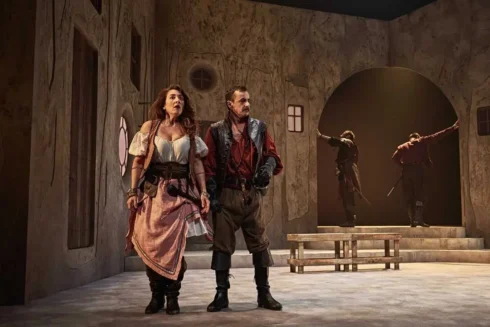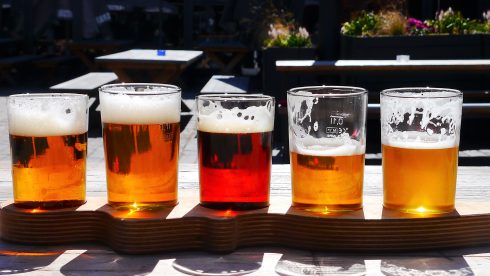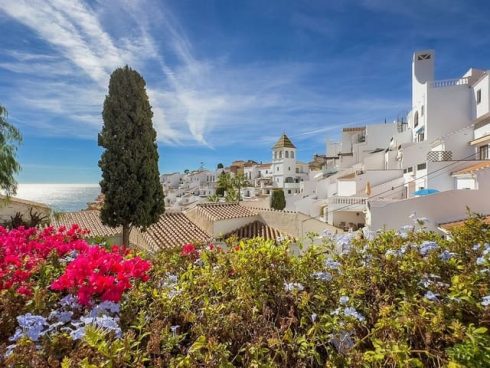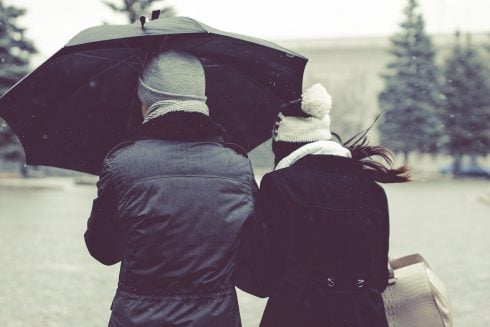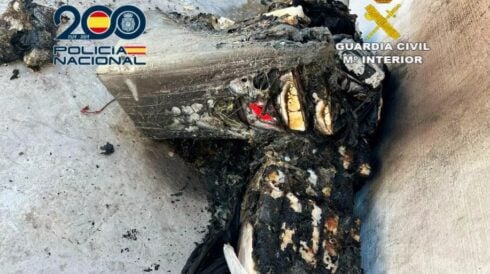THE San Fermin ‘running of the bulls’ is a famous – and controversial – festival in Pamplona, Navarra region, where men and beasts run together in an enclosed space (‘encierro’). Gorings are common and 16 deaths have occurred, over time.
This year, the dangerous spectacle takes place from 6-15 July. It is drawing widespread criticism for animal welfare campaigners, who say it is ‘maltrato’ (mistreatment) of live animals. However, traditionalists want it to continue.
Originally popularised by Ernest Hemingway’s 1926 novel, ‘Fiesta: The Sun Also Rises’, the San Fermin fiesta now takes place in a different society, where traditionalists still enjoy bull sports, but using animals for public entertainment is on the decline.

So, what happens?
During San Fermín, eight ‘encierros’ (enclosed bull runs) occur, early in the morning. At each run, adults (yes, men and women!) can accompany the bulls throughout the streets. The idea is to run alongside them without being trampled or gored… or killed. Don’t worry – medical assistance is on hand, although you need your medical insurance details.
The event also features bullfights, watched by thousands of spectators, and featuring renowned matadors.
The more ‘normal’ fiesta attractions include street parades, childrens’ activities, music, DJs, folk dancing, puppet theatres and those obligatory fireworks – so there’s plenty to do at San Fermin if you don’t like (or are terrified by) bulls.

Where do the bulls run?
At 8am every morning of the fiesta, a ‘cohete’ (rocket) marks the start of the proceedings. This has been happening since 1974.
The event involves opening the corral doors of six running bulls, which stampede over a course of 875m, led by six fighting bulls and six tame oxen. This herd heads towards the town bullring. The run lasts for 2-3 minutes – unless something goes wrong.
Along the route, the bulls are surrounded by brave (or foolish) people of various ages, although most don’t run the whole way. As well as being physically exerting, it’s almost impossible to outrun the quicker, four-hoofed beasts.
Any adults can participate, free of charge, but they should not be intoxicated (always a risk at fiestas). Before the run starts, the participants chant: “We beseech San Fermin to guide us in this run and to give us his blessing.”
The route is fully fenced, to prevent any bulls from escaping and ‘surprising’ unsuspecting spectators. Some sections of the enclosure are reportedly more dangerous than others. The festival programme advises how to avoid becoming trapped in corners and against walls.
The official website also lets you search past runs for the number of “gorings” and “traumatisms”.
How did this madness start?
In the past, the bull running wasn’t entertainment. Dating to the Middle Ages, it had a practical purpose of moving the bulls from countryside to city, for the San Fermin bullfighting festivities. This event was probably organised by the 14th century Navarrese monarchs in the Plaza del Castillo. Running the bulls moved them efficiently through Pamplona’s streets. It happened at dawn when there was sufficient daylight.
The tradition evolved over time, combining elements of religious festival, livestock transportation, and local customs.
The annual event is also influenced by San Fermín – the patron saint of Pamplona. A Christian martyr, he was beheaded in the 3rd century. The town festival honours his life and martyrdom. Over time, the bull running became an integral feature of the wider San Fermin celebrations.
As the bull running gained popularity, it became one of most famous events on the Spanish fiesta calendar. In recognition terms, it is only rivalled by the (much safer) La Tomatina mass fruit fight, in Buñol, near Valencia.
A controversial event
In recent years, pressure has increased to ban bull running in Spain. Proving a fatal year, 2022 saw 200 people killed in the national ‘encierros’. In Pamplona alone, 52 people were hospitalised, with five gored.
Despite the controversy about bull running, the Pamplona event continues because of its deep cultural and historical roots. For local people, it is part of their identity and heritage. Many residents participate as runners.
The fiesta is also profitable, attracting national and international visitors. The influx of tourists helps the local economy. The controversial event appears in international media coverage, giving the town a publicity boost (using the ‘all publicity is good publicity’ adage).
Legally, the event isn’t a problem. Despite Spain recently tightening its animal welfare laws, including banning wild animals from being used in public spectacles, bullfighting and running are exempt under the cultural exception clause. This allows the event to continue, despite opposition from animal rights groups.

Are its days numbered?
However, public sentiment is shifting. With the decision about running bulls in Pamplona lying with the local authorities, the event will surely continue until demand for it wanes.
In April 2020, PETA (People for the Ethical Treatment of Animals) wrote to the mayor of Pamplona, offering €250,000 to axe the bull-running and bullfights. This followed a temporary suspension during the Covid lockdown. Spain’s PACMA is also against bull running, although the PP tends to remains in favour.
A British resident of Granada, Jackie Davidson, says: “I have been to the running of the bulls in Pamplona, but long time ago, when it was seen as a cultural event. However, today, I don’t really think there’s a place for it.”
Oscar, a British teen, said: “I don’t like the idea. It’s too dangerous. No, I wouldn’t like to travel there with my friends and run amongst the bulls.”
Sorrel Badger, an animal rights supporter, says: “For me, the bull run shows that our human evolution has a long way to go. One of the biggest problems is a lack of compassion, not just for other human beings but for our fellow creatures who are entitled to live their best lives. It must be hellish for these poor bulls. Yet apparently entertainment is more important than empathy.”
What is accepted as ‘culture’ in Spain is changing, ‘poco a poco’.
QUICK GUIDE TO RUNNING WITH BULLS
Don’t
- Turn up intoxicated.
- Hassle the bulls.
- Run right behind, or at, the bulls.
- Get in front of their horns.
- Trip other runners over so they might be trampled.
- Wear unsuitable shoes.
- Carry items that aren’t needed (inflatable items, iPads…).
- Take daft selfies inside the bull enclosure.
Do
- Take care.
- Take your health insurance card.
- Keep your eye on those horns!
- Maybe just spectate instead?
READ MORE
- IN PICTURES: San Juan in Lanjaron is one of the craziest fiestas in Spain’s Andalucia
- IN PICTURES: Corpus Christi in Spain’s Granada
- Six injured in running of the bulls in Spain’s Pamplona
Click here to read more Olive Press Travel News from The Olive Press.



